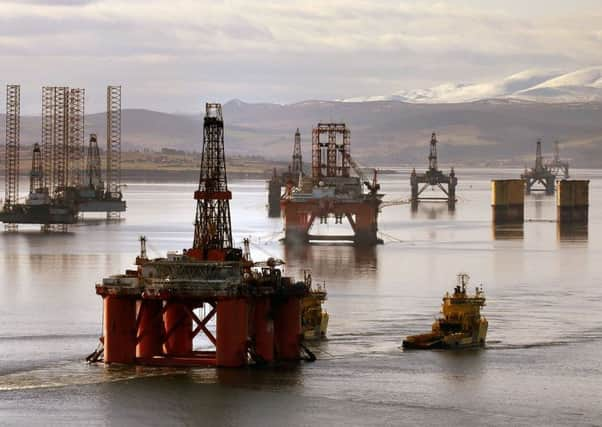Bill Jamieson: Oil price rise does not mean a return to the good times yet


How perverse this seems. Many had abandoned hope of any oil price recovery for the foreseeable future. But movements in the oil price never cease to confound and surprise. Just when we thought it was stuck at around $30 for the next 12 months, Brent crude has now risen by 80 per cent since it fell to $28 back in January – a 13-year low.
The price rally has defied all expectations and confounded the experts. Could this be signalling that the worst is over for the oil price and for the crisis that has caused thousands of jobs to be lost on North Sea activity directly and thousands more down the supply chain? And how much higher might the oil price go from here?
Advertisement
Hide AdAdvertisement
Hide AdOil price prediction is notoriously hazardous. Many esteemed analysts, investment banks and economists have come badly unstuck on their futurology. It brings to mind that rueful response of the great economist JK Galbraith: “The only function of economic forecasting is to make astrology look respectable.”
First, the “good” news. It does seem as if the global oil market has moved closer to balance between supply and demand – or at least further away from a glut of supply – that seemed to be the case just a few months ago.
Sentiment took a knock earlier this month when Saudi Arabian oil giant Aramco told visiting journalists that it had no intention of cutting production to help lift oil prices. Indeed, its chief executive, Amin Nasser, said that production will increase this year as the company prepared for a share sale.
What has lifted sentiment – and the oil price – has been a series of supply cutbacks and disruptions around the world. Latest figures from the US show that oil inventories have fallen sharply – down by 4.2 million barrels to 537 million barrels in the week to 20 May.
Several factors account for the fall. Huge fires in Alberta, Canada – the biggest supplier to the US – have disrupted oil production there. Sabotage attacks on pipelines in Nigeria have cut production to the lowest in more than two decades. Venezuela is struggling to maintain output amid power cuts. And talks in recent months between Opec and Russia about freezing oil production had already encouraged a price rise.
These disruptions to oil supplies have helped to lift the price, offsetting higher production from Iran – and those “more oil” statements from Aramco – while oil demand in major economies such as China, India and Russia has been higher than expected.
Against this backdrop, analysts are starting to raise their forecasts, and in a sign of growing confidence, oil companies have started preparing for higher prices. BP said last month it had budgeted for prices of at least between $50 and $55 a barrel in 2017.
And last month US oil producer Pioneer Natural Resources announced plans to add up to ten new rigs when the oil price gets back up to $50.
Advertisement
Hide AdAdvertisement
Hide AdThis has encouraged some to believe that crossing the $50 a barrel barrier may be enough on its own to encourage oil executives to reassess. But market psychology can cut both ways, with feedback loops that can be over-optimistic as well as overly pessimistic. Price movements affect behaviour – which in turn affects prices.
In this instance, the price plunge hit supply quicker than expected. Shale projects in the US were cut back. And in the North Sea new exploration and development activity has been severely reduced. On top of these came chance events in Nigeria, Canada and elsewhere that hit production.
And this roller-coaster performance has its own psychological effect – making oil industry leaders reluctant to respond quickly to a price recovery for fear of a relapse that could catch them out. As a result, it is too early to say that the good times are back for the oil industry. Indeed, it is likely that across the world the oil industry is headed for a record third straight year of cutbacks. Here at home the job cuts at Shell follow its takeover of oil and gas exploration firm BG Group, and what was described as a “lower for longer” oil price environment. Back in February the tumbling oil price resulted in the group reporting its steepest fall in full-year earnings for 13 years. The company still has to press ahead with reductions to its cost base and efficiency improvements. The latest layoffs will take the total number of staff and contractor roles lost from Shell from the start of 2015 to the end of 2016 to at least 12,500.
But similar action by other oil majors may help sustain a firmer oil price in the period ahead. As Bloomberg reported last week, Norwegian group Statoil now reckons that global crude supplies could “start to dwindle in as little as two years… as the industry cuts investment to weather the worst market collapse in a generation”.
It seems odd that so many now regard a rising oil price as a cause for cheer. But it has several beneficial effects, and not least for all those companies operating in the North Sea and the myriad specialist engineering and service companies that supply them.
A recovery would help cauterise the slowdown in Scotland’s economy overall. Inverness-based Mackay Consultants now predicts this will grow by just 1.6 per cent this year and by 1.8 per cent next year – below the long-term 2 per cent average. Even a stabilisation of oil prices would be a boost to confidence overall.